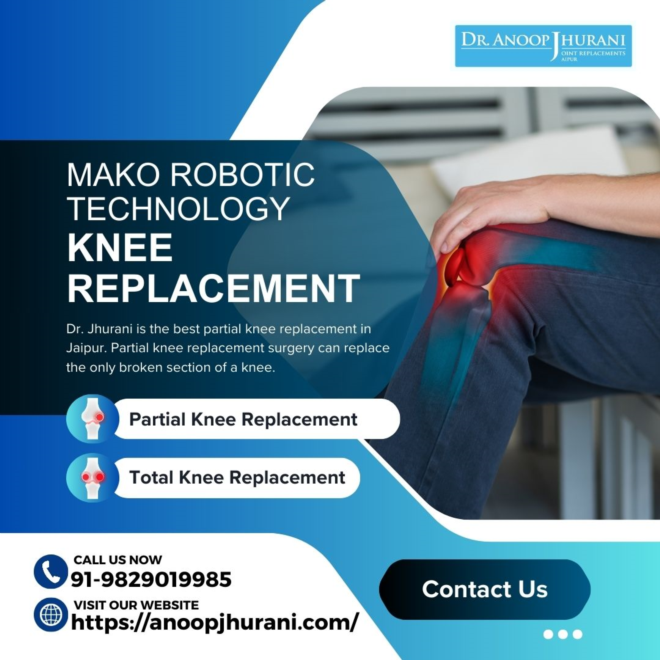
blog address: https://anoopjhurani.com/partial-knee-replacement/
blog details: Knee pain and joint deterioration can severely impact one’s mobility and quality of life, often requiring surgical intervention to restore function. Knee replacement surgery, or knee arthroplasty, is a widely performed procedure designed to relieve pain, correct joint alignment, and improve mobility by replacing damaged knee surfaces with artificial components. In India, both partial and total knee replacement surgeries are available, providing patients with options based on the severity and extent of joint damage.
Types of Knee Replacement Surgery
1. Total Knee Replacement (TKR): Total knee replacement surgery is the most comprehensive approach, recommended when osteoarthritis or joint damage has affected multiple compartments of the knee. In TKR, the entire knee joint is resurfaced or replaced with metal and plastic components that mimic the function of the natural knee. Patients experiencing widespread joint degeneration often find significant relief with this procedure, as it addresses the full extent of the damage.
2. Partial Knee Replacement (PKR): Joint damage is limited to a single part of the knee for some patients. This can be the medial (inner), lateral (outer), or patellofemoral (front) compartments of the knee. In these cases, a partial knee replacement may be sufficient to relieve pain and restore function. Also known as unicompartmental knee replacement, this procedure involves replacing only the affected compartment, preserving as much of the natural knee structure as possible. This approach typically allows for a faster recovery and retains more of the knee’s natural movement.
The Anatomy of the Knee and the Need for Replacement
The knee joint comprises three primary compartments:
• Medial Compartment: Located on the inside of the knee.
• Lateral Compartment: Found on the outside of the knee.
• Patellofemoral Compartment: The front of the knee, where the kneecap meets the thigh bone.
Damage to any of these compartments can lead to pain, swelling, and loss of function, often necessitating surgical replacement. When only one compartment is affected, a partial knee replacement can target and treat the damaged area, making it a minimally invasive option.
The Role of Robotic Technology in Knee Replacement Surgery
Robotic-assisted knee replacement has transformed knee surgery by improving the precision and accuracy of the procedure. Dr. Anoop Jhurani, a pioneer in robotic-assisted knee replacement, offers partial knee replacements using MAKO robotic technology in Jaipur, India. This technology enhances the surgeon’s ability to perform the surgery with nearly 100% accuracy, reducing the risk of error and improving patient outcomes.
Conclusion
Knee replacement surgery is a proven solution for individuals with severe knee pain or joint damage, offering both total and partial replacement options. The advancement of robotic-assisted techniques has brought a new level of precision and patient comfort to the field, making recovery smoother and outcomes more reliable. In Jaipur, Dr. Anoop Jhurani stands out as a leader in robotic-assisted knee replacement, helping patients regain mobility and quality of life.
For those considering knee replacement surgery, consulting with a qualified robotic-assisted surgeon can provide the best insights into options tailored to individual needs and conditions.
keywords: Knee Replacement in Jaipur, Best Knee Replacement Doctor in Jaipur, Computer Navigated Joint Replacement India, Best Hip Replacement Doctor in Jaipur, Robotic Knee Replacement in India, Total Knee Replacement in India, Partial Knee Replacement in Ind
member since: Nov 13, 2024 | Viewed: 175


